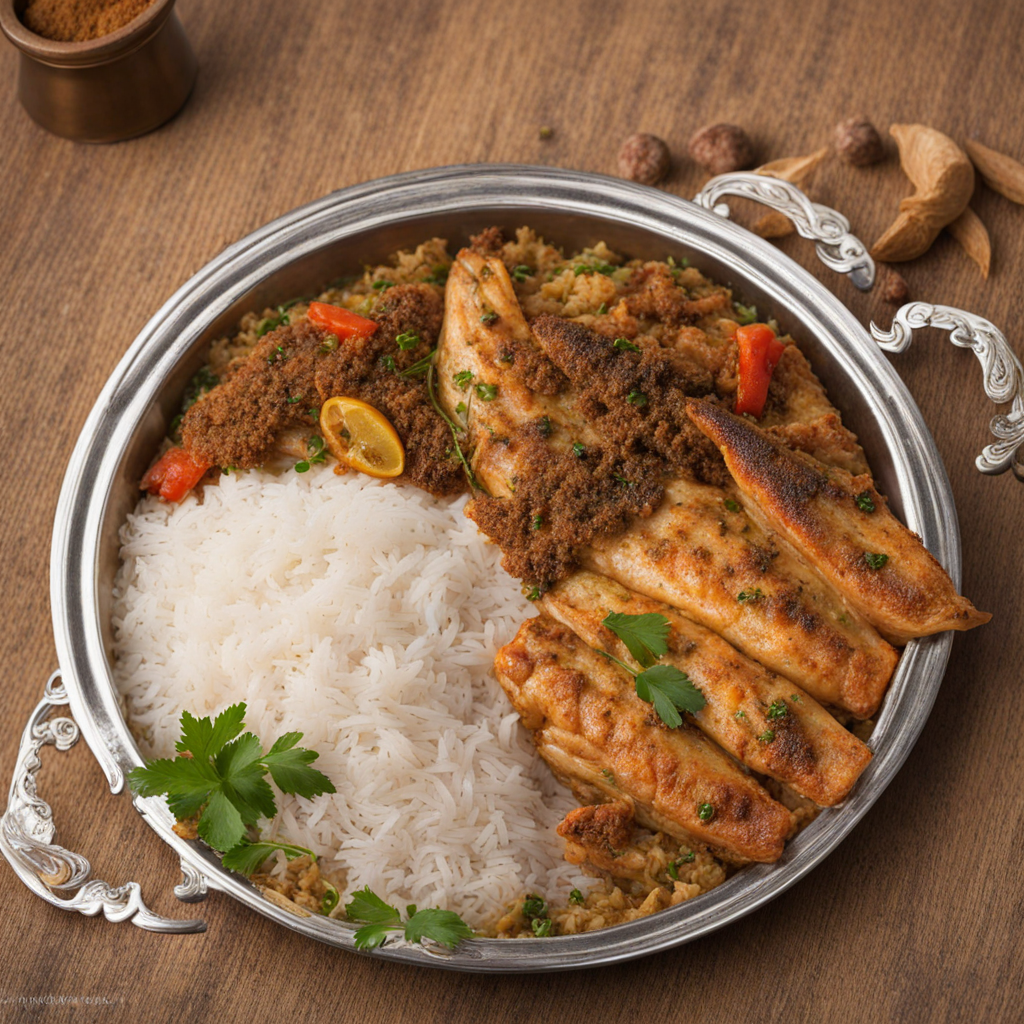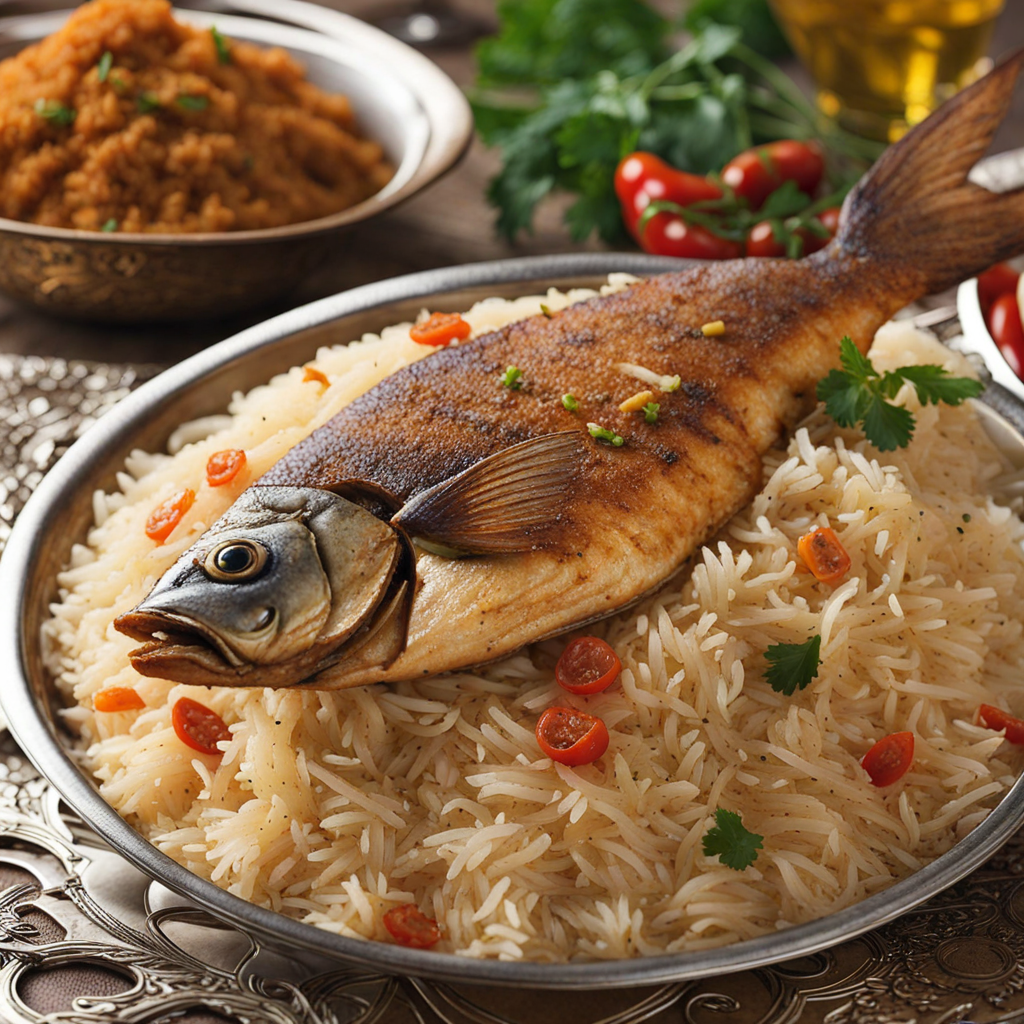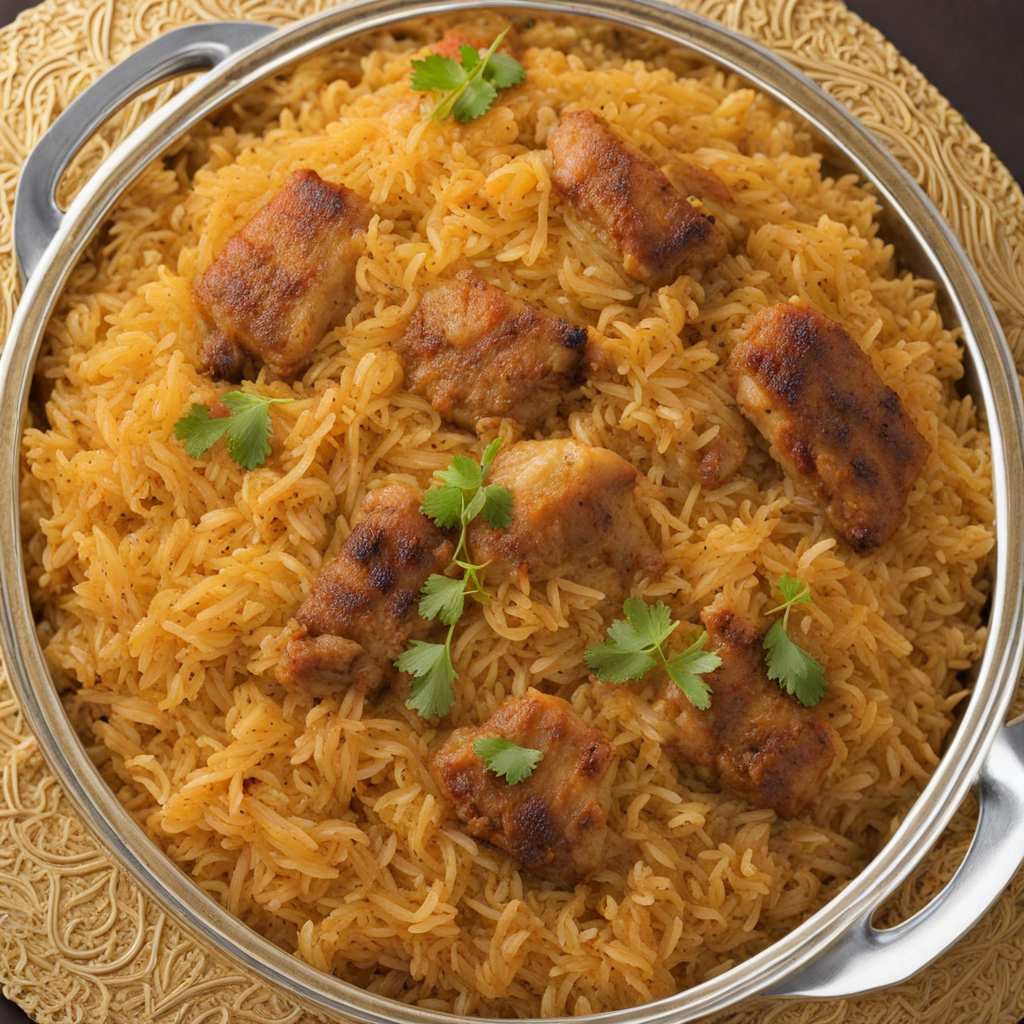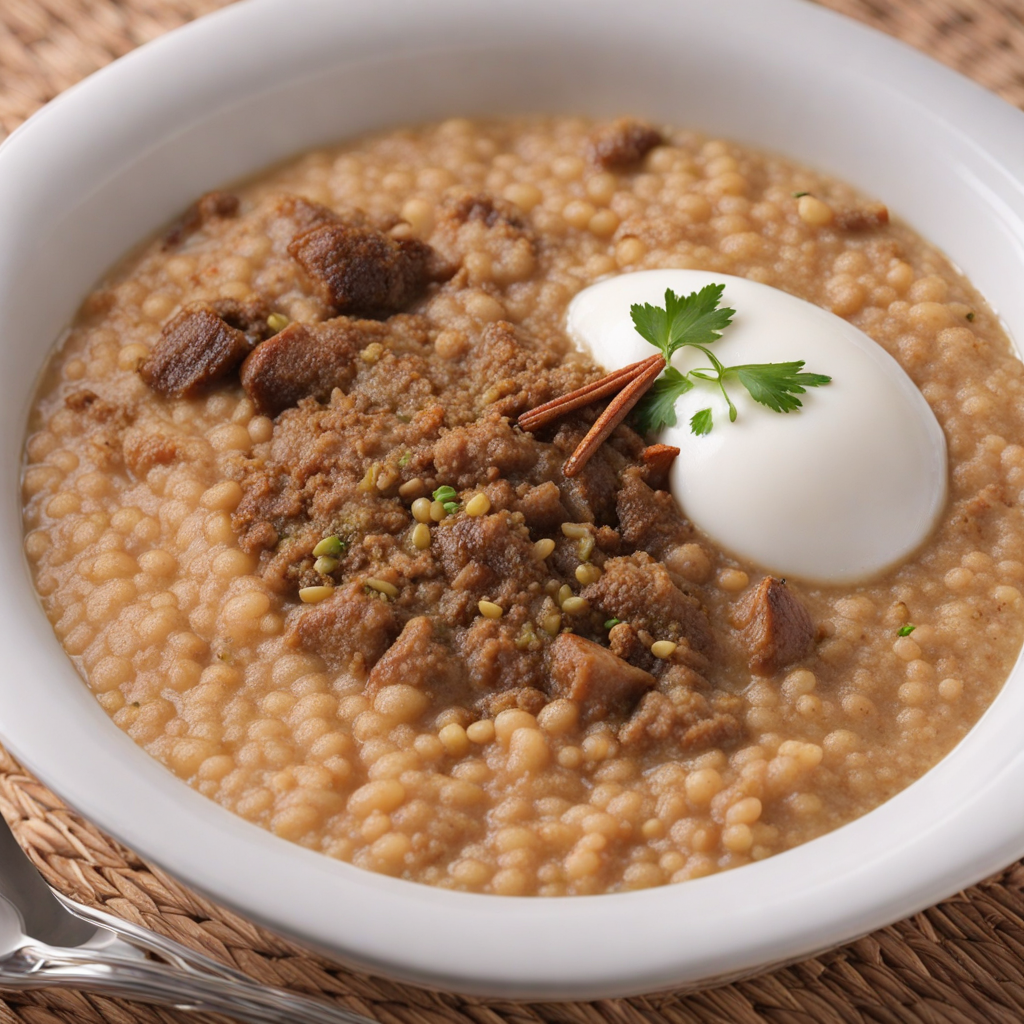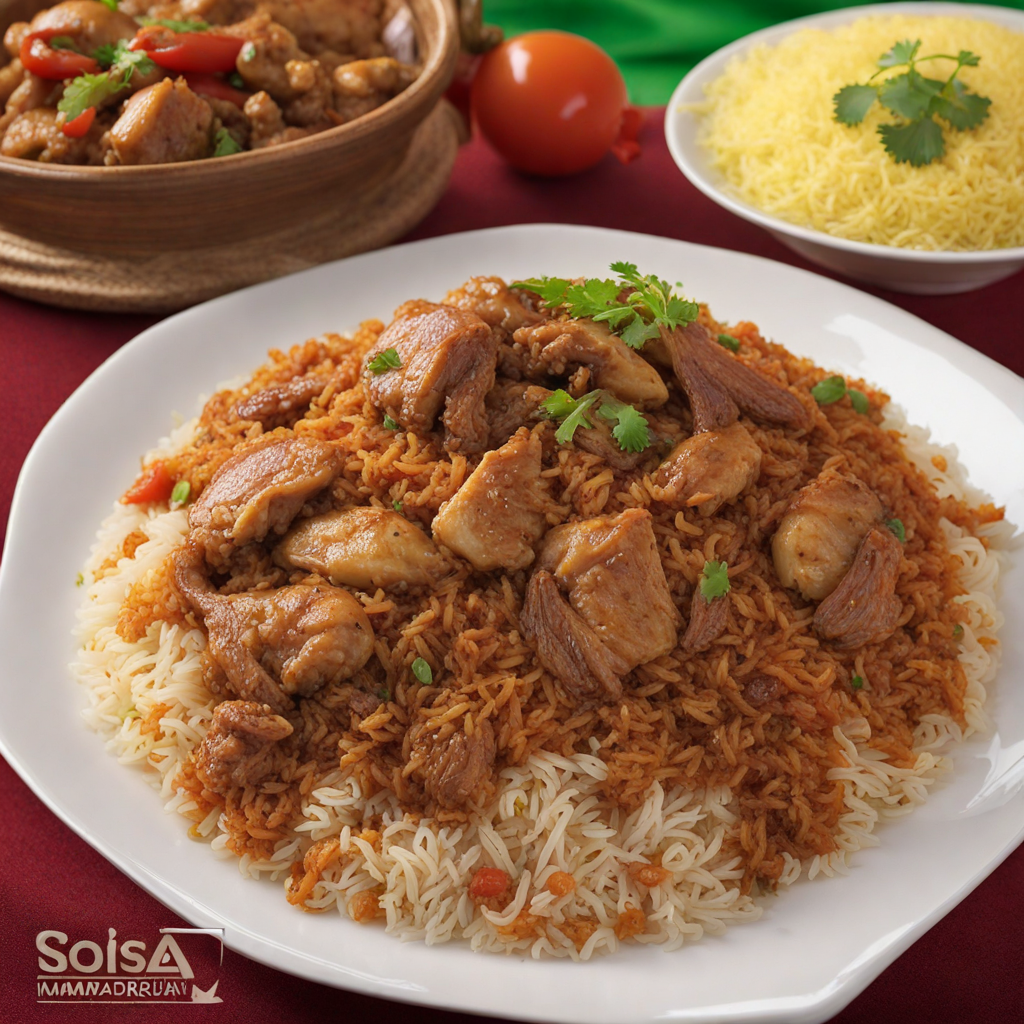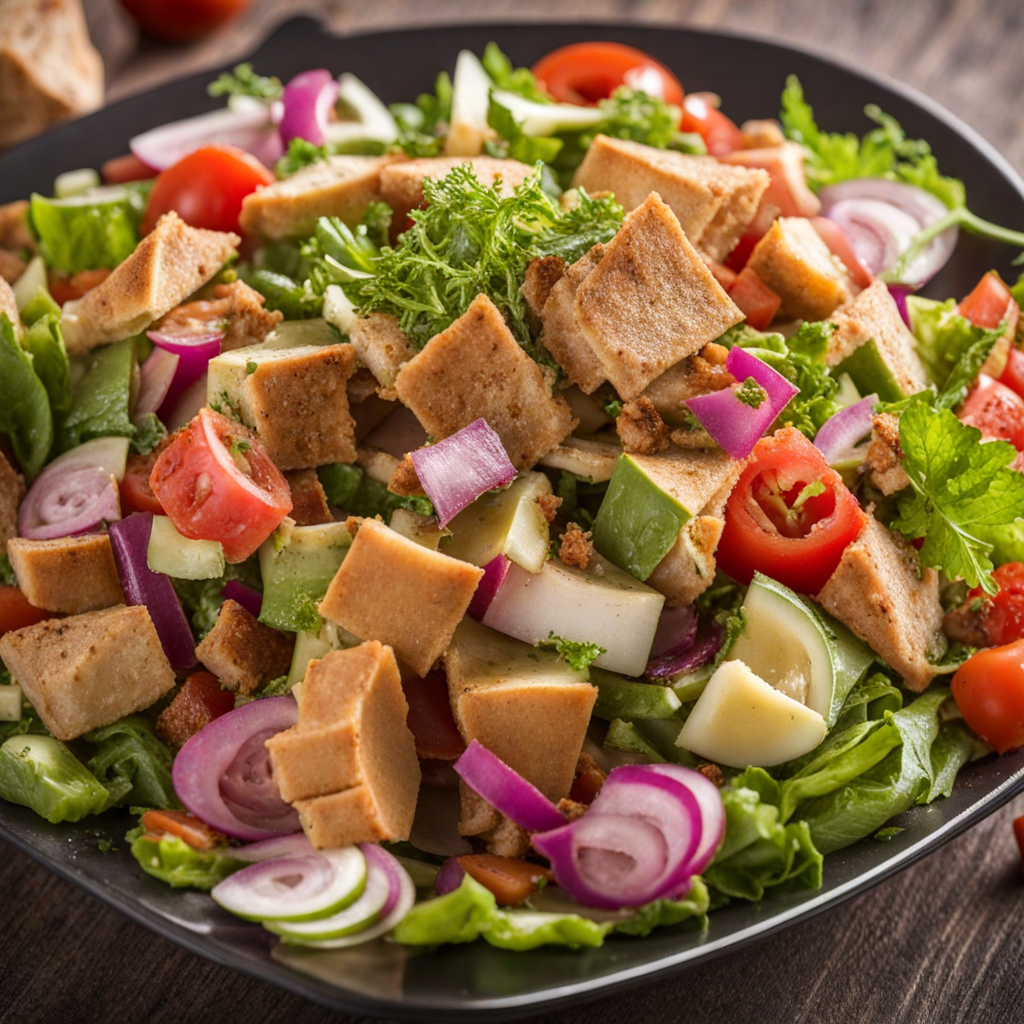Mutabbaq Samak
Mutabbaq Samak is a delightful Kuwaiti dish that showcases the region's love for seafood and rich flavors. At its core, this dish features a thin, flaky pastry that is skillfully stuffed with a savory mixture of fresh fish, often seasoned with aromatic spices and herbs. The combination of ingredients creates a harmonious blend of textures and flavors, making each bite a tantalizing experience. The fish is typically marinated to enhance its natural taste, and the inclusion of ingredients like garlic, onion, and green chilies adds a layer of depth and complexity to the overall profile of the dish. Once the pastry is filled, it is folded meticulously and pan-fried until golden brown and crispy. This cooking method results in a beautifully crunchy exterior that contrasts perfectly with the tender, moist fish filling inside. The dish is often served with a side of tangy dipping sauces or fresh salads, allowing for a refreshing balance to the richness of the pastry. The presentation is often vibrant, garnished with fresh herbs and lemon wedges that invite diners to indulge in this culinary delight. As you take your first bite of Mutabbaq Samak, you'll be greeted with an explosion of flavors that celebrate the sea and the spices of the region. This dish is not only a testament to Kuwait's culinary heritage but also offers a unique taste experience that is both satisfying and memorable. Whether enjoyed as a street food snack or a main course, Mutabbaq Samak represents the essence of Kuwaiti cuisine and is sure to leave a lasting impression on any food lover eager to explore new gastronomic delights.
How It Became This Dish
Origins of مطبق سمك مطبق سمك, or "Maqab Samak," is a traditional Kuwaiti dish that showcases the rich culinary heritage of the Arabian Gulf. The name itself translates to "fish in a folded bread," reflecting the dish's nature of wrapping seasoned fish within a dough. The origins of مطبق سمك can be traced back to the coastal communities of Kuwait, where fishing formed an integral part of daily life. With the abundance of the sea providing a variety of fish, local cooks began to innovate ways to prepare and preserve this vital resource, leading to the creation of many fish-based dishes, including مطبق سمك. The dish likely emerged in the late 19th to early 20th centuries, during a time when maritime trade flourished in the Persian Gulf. Kuwaiti fishermen, influenced by the culinary practices of neighboring countries such as Iraq and Saudi Arabia, began experimenting with different spices and cooking techniques. The use of flatbreads to encase fish reflects the broader Middle Eastern tradition of using bread as both a utensil and a vehicle for flavors. The practice of wrapping food in bread not only adds texture but also allows for easy consumption, making it a popular choice among workers and families alike. \n\n Cultural Significance In Kuwaiti culture, مطبق سمك holds a special place as a comfort food and a symbol of community. It is often prepared during gatherings, family meals, and festive occasions, where the act of sharing food fosters connection and togetherness. The dish is not only a culinary delight but also a reminder of Kuwait's maritime heritage and the importance of the sea in the lives of its people. Traditionally, families would gather to enjoy مطبق سمك after a day of fishing or during weekends when they would celebrate the bounty of the sea. The preparation of مطبق سمك is often a communal activity, with family members working together to season and wrap the fish. This collaborative effort reinforces family bonds and encourages the passing down of culinary traditions from one generation to the next. Festivals and cultural events in Kuwait often feature مطبق سمك as a highlight, showcasing its significance in the national identity and its ability to bring people together through food. \n\n Ingredients and Preparation The basic ingredients for مطبق سمك include fresh fish, typically local varieties such as Hamour (Grouper) or Zubaidi (a type of mullet), which are seasoned with a blend of spices like cumin, coriander, and turmeric. The fish is often marinated with garlic, lemon juice, and fresh herbs to enhance its flavor before being wrapped in a dough made of flour and water. The dough is rolled out into thin sheets, and the seasoned fish is placed in the center, where it is carefully folded and sealed, resembling a stuffed flatbread. Cooking techniques for مطبق سمك vary, but the most common methods involve grilling or frying. Grilling allows for a smoky flavor that complements the fish, while frying gives the dish a crispy exterior. Some families prefer to bake the wrapped fish, resulting in a softer texture. Regardless of the cooking method, the final product is a deliciously fragrant dish that encapsulates the essence of Kuwaiti cuisine. \n\n Evolution and Modern Variations As Kuwait has evolved over the years, so too has مطبق سمك. The dish has adapted to changing tastes and the availability of ingredients. In contemporary Kuwaiti cuisine, variations of مطبق سمك have emerged, incorporating different types of fish and innovative seasoning blends that reflect global culinary trends. Chefs and home cooks alike experiment with fillings, adding vegetables or cheese to create unique twists on the traditional recipe. In recent years, the rise of health-conscious eating has influenced the way مطبق سمك is prepared. While the classic version remains popular, there is a growing trend towards grilling or baking instead of frying to reduce oil consumption. This shift has made the dish more appealing to a broader audience, including those seeking lighter alternatives without sacrificing flavor. \n\n Global Recognition and Influence As Kuwait's culinary scene gains international attention, مطبق سمك has started to appear on the menus of restaurants outside of the Gulf region. Chefs who specialize in Middle Eastern cuisine often highlight the dish as an example of the region's rich culinary diversity. Its unique combination of flavors and textures has captivated food enthusiasts worldwide, leading to a resurgence of interest in traditional dishes from the Gulf. Furthermore, the popularity of مطبق سمك has encouraged culinary tourism in Kuwait, as visitors seek authentic experiences that connect them with local food traditions. Cooking classes and food tours often include a session on how to make مطبق سمك, allowing tourists to learn about its history and cultural significance firsthand. This not only fosters appreciation for Kuwaiti cuisine but also helps preserve its legacy for future generations. \n\n Conclusion مطبق سمك is more than just a dish; it is a reflection of Kuwait's history, culture, and community spirit. From its humble beginnings rooted in the coastal lifestyle to its status as a beloved comfort food, مطبق سمك continues to evolve while retaining its traditional essence. As Kuwait embraces modernization, the dish serves as a culinary bridge, connecting the past with the present and reminding both locals and visitors of the importance of food in fostering relationships and celebrating heritage.
You may like
Discover local flavors from Kuwait


